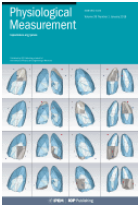 Jean-Yves Hogrel, Head of the Physiology and Neuromuscular Evaluation Laboratory, Damien Bachasson of the same laboratory, and Olivier Benveniste of the Inflammatory Muscle and Innovative Therapies team at the Myology Research Centre, have just published an article* relating to the validation of the MyoQuad device among patients with inclusion body myositis, a tool created and developed in this laboratory and a recent addition to the Myotools family.
Jean-Yves Hogrel, Head of the Physiology and Neuromuscular Evaluation Laboratory, Damien Bachasson of the same laboratory, and Olivier Benveniste of the Inflammatory Muscle and Innovative Therapies team at the Myology Research Centre, have just published an article* relating to the validation of the MyoQuad device among patients with inclusion body myositis, a tool created and developed in this laboratory and a recent addition to the Myotools family.
How did this project originate?
Just over 10 years ago, the project began with the study of patients who had inclusion body myositis (IBM) and who presented major weakness of the knee extensor muscles (quadriceps), which characterises this disease. These patients, who were followed up at the Institute by Olivier Benveniste, were then evaluated using the Biodex, an isokinetic machine that serves as the reference product in the measurement of knee extension force. We had shown that quadriceps weakness was a key marker for disease progression, but that ultimately, no satisfactory method existed to perform this evaluation in routine clinical practice (1).
Was it at this stage that the idea of the MyoQuad emerged?
Indeed, this presented an opportunity to develop a dynamometer that avoided all the disadvantages of the existing products: not too expensive, no measurement problems for the weakest and the strongest patients, could be used in any location, and presented metrological properties similar to the other Myotools (measurement accurate to within approximately 10 grams). In 2014, we tested the first prototype among patients enrolled in the IBMan study (natural history of the disease (2)). In 2016, we validated the second-generation (pre-production) prototype among patients enrolled in the RAPAMI trial (3) via a MyoQuad / Biodex cross-validation. In our recent publication, we demonstrated that the measurement of force performed with the MyoQuad, and changes in patient strength over time, were similar to those measured using the reference method.
What does this device consist of?
The MyoQuad device was designed to be used equally in a hospital, home or office-based consultation setting. The idea is that it can be hooked onto the leg of any medical bed or chair, whether round or rectangular in profile. The dynamometer, which is hooked at one end to a fixed support and at the other to the patient’s ankle, is connected by Bluetooth to a tablet, which allows measurements to be visualised in real-time, using a dedicated application.
The MyoQuad was developed in the context of the IBM trial; can the tool also be used in other situations?
Yes, absolutely, this was also the reason we wanted to develop an operational system that could be used in any consultation, for any disease, by any patient. The idea is to achieve the inclusion of this device in office-based consultations in order to detect muscle weakness, for example to anticipate loss of autonomy in the context of ageing. Indeed, quadriceps strength is a key marker for ageing, since there is particular involvement of this muscle during the ageing process. One could also use this device in cancer patients, to measure cachexia progression, or to evaluate muscle recovery following a hip fracture.
More generally, the fact that this muscle is continuing to function is a positive prognostic factor for all diseases, in ageing and in a general life context. An easy and accessible method to evaluate decrease in strength at a particular moment in time, using a portable device such as the MyoQuad, could help in quickly putting in place preventive measures.
What are the next few stages for MyoQuad?
We are at the production stage. For the moment, we will have a small batch (approximately ten units) manufactured by our partner, which is already developing the Myopinch and Myogrip devices. It is also essential that we promote the Myotools devices developed in our laboratory: for MyoQuad, in the 3 weeks since the article was published, we have already received 5 orders. We will now try to integrate the MyoQuad device into our range of measurement tools for several clinical trials.
(1) There are several methods to evaluate knee extensor strength:
the isokinetic method, which is very accurate but too expensive and not portable (Biodex)
manual dynamometry (dynamometer held by hand by the physiotherapist), poorly suited to very weak and very strong patients
fixed dynamometry (a sensor attached to the wall), well-suited to very strong patients but not suited to very weak patients
(2) IBMan (Muscle Strength and Inflammatory Response in Patients With Inclusion Body Myositis) : NCT00898989
(3) RAPAMI (Rapamycine vs. Placebo for the Treatment of Inclusion Body Myositis) : NCT02481453
The article is being submitted.
